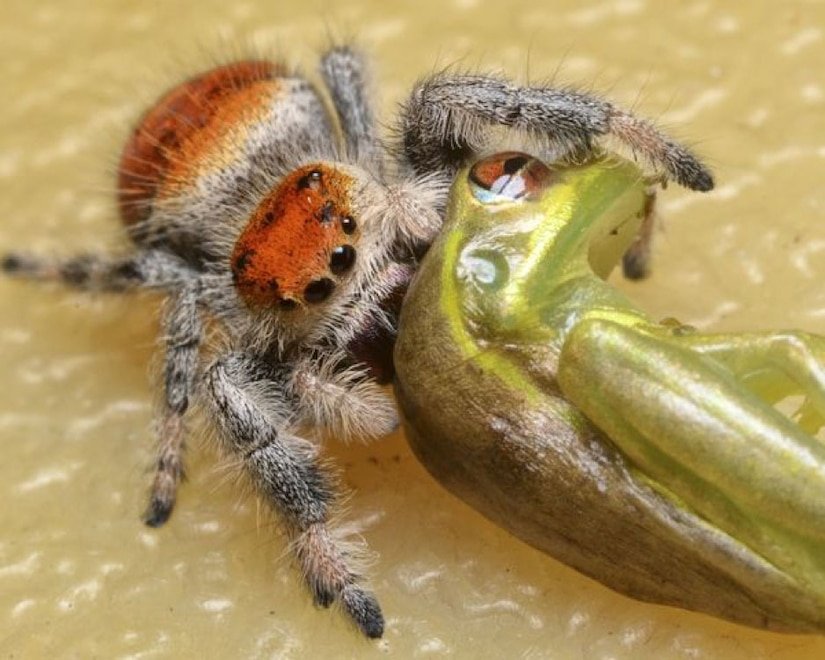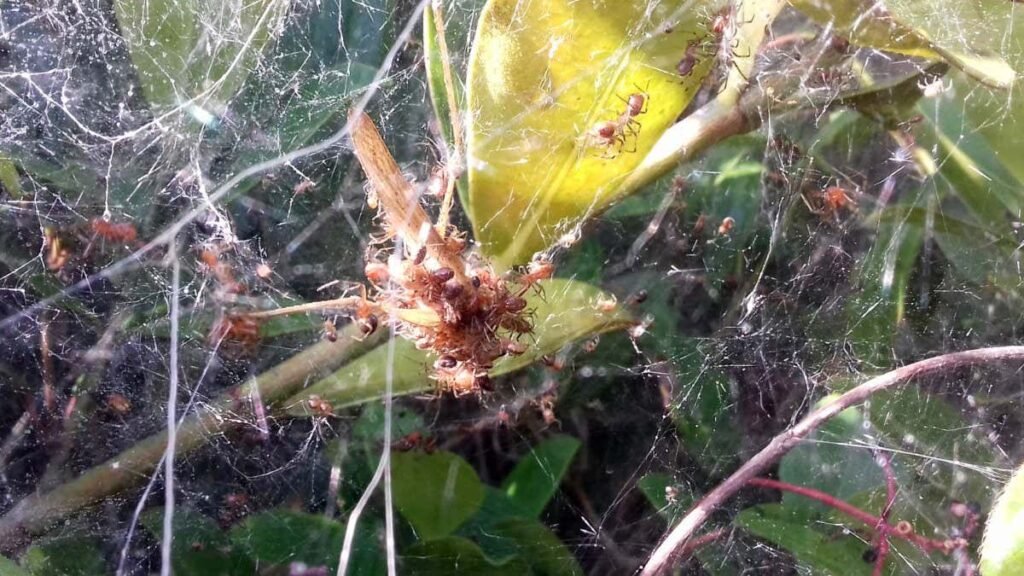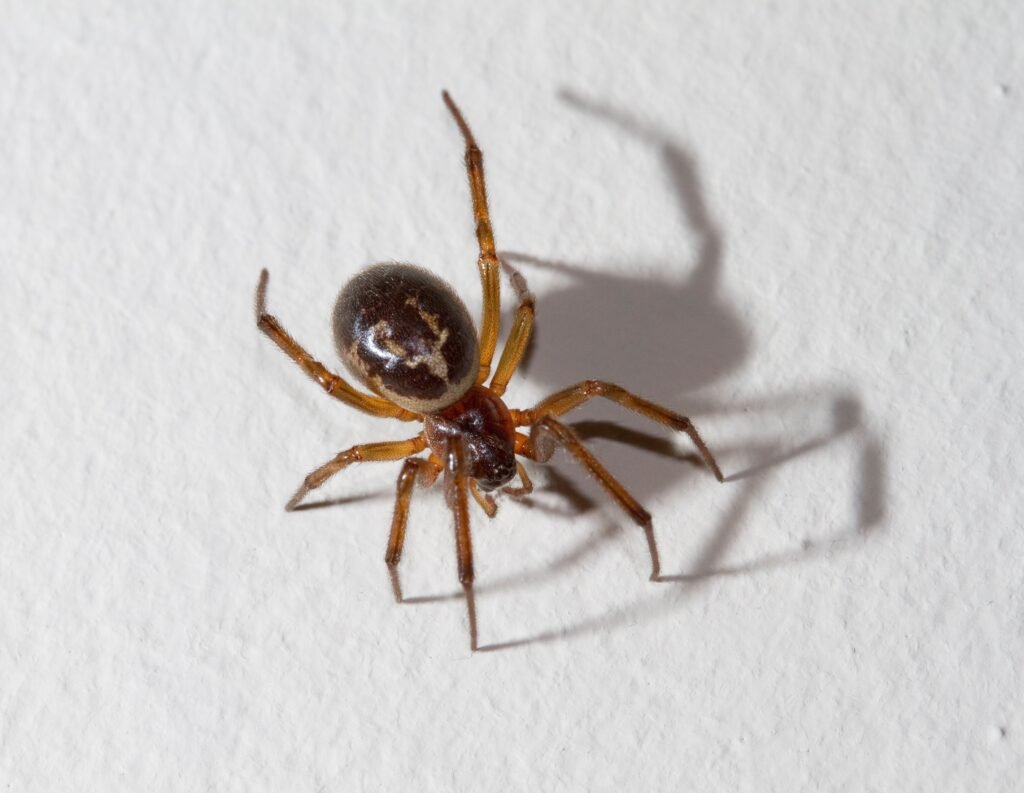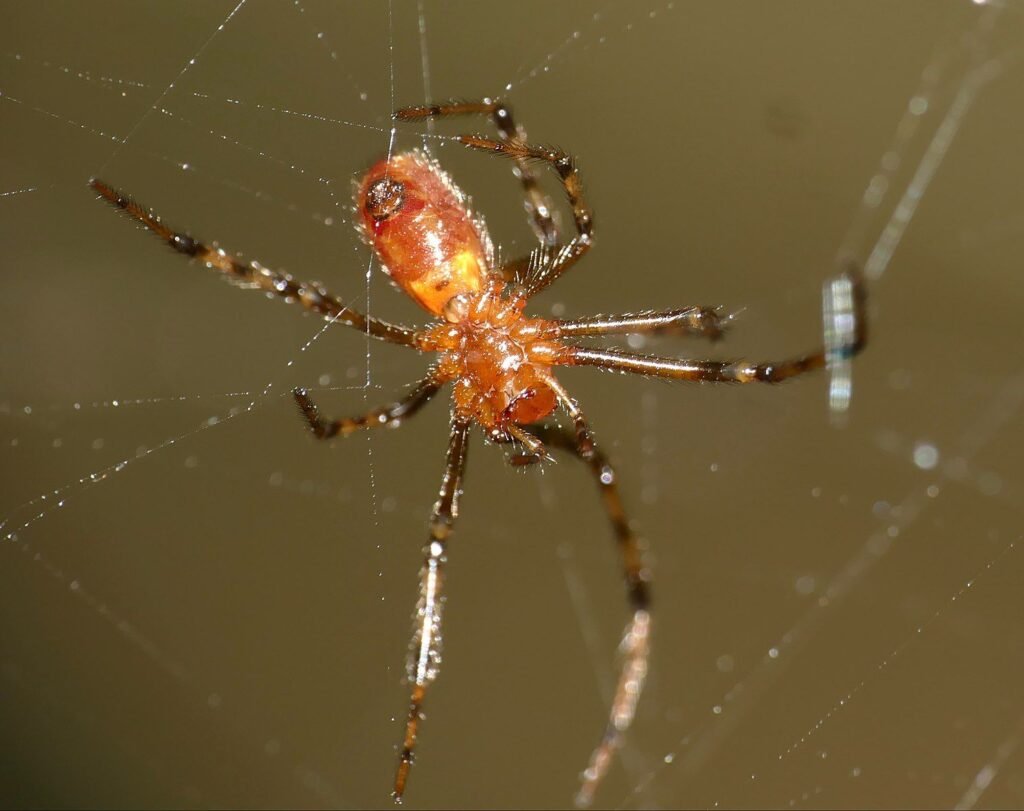Have you ever wondered how the size of a spider can affect its ability to catch its prey? In this article, we will explore the fascinating world of spiders and their impact on their prey. You’ll be intrigued by the intricate web-building skills of these eight-legged creatures and how their size plays a significant role in their hunting success. From tiny spiders to giant tarantulas, we will uncover the secrets behind the diverse strategies these spiders employ to catch their unsuspecting victims. Get ready to see the impact of spider size on their prey like never before!

This image is property of i.natgeofe.com.
1. Spider Size and Prey Acquisition
1.1 Visual Predators vs Web-building Spiders
Spider size plays a crucial role in how different species acquire their prey. Visual predators, such as jumping spiders, primarily rely on their keen eyesight to detect and chase down their prey. These agile hunters, with their small to medium-sized bodies, are adept at stalking and rapidly pouncing on their unsuspecting victims. On the other hand, web-building spiders, like orb-weavers, construct intricate webs to ensnare their prey. These spiders come in various sizes, ranging from small to large, with the size of their bodies influencing the structure and strength of their webs.
1.2 Size of Prey Captured by Different Spider Sizes
The size of the prey captured by spiders is influenced by the spiders’ own size. Larger spiders are generally capable of capturing larger prey due to their increased strength and ability to subdue struggling victims. Smaller spiders, however, are limited to catching smaller prey that can be easily overpowered by their more modest size and strength. It is important to note that while larger spiders can capture a broader range of prey sizes, they are not limited to exclusively targeting large prey. Spiders of all sizes have been observed capturing and consuming a variety of prey sizes, including insects that range from tiny flies to sizable beetles.
1.3 Effects of Spider Size on Hunting Techniques
Spider size also affects the hunting techniques employed by different species. Smaller spiders, with their agility and quick movements, tend to employ active hunting strategies, actively seeking out and chasing down their prey. They rely on stealth, speed, and precision to capture their prey when it least expects it. In contrast, larger spiders often opt for a more passive hunting approach, relying on their superior strength and the construction of intricate webs to trap unsuspecting prey. These larger spiders strategically position themselves in their webs, patiently waiting for vibrations that indicate the presence of potential prey.
1.4 Spider Size and Prey Selection
The size of spiders also influences their selection of prey. Research suggests that larger spiders tend to exhibit a greater prey selectivity compared to their smaller counterparts. They often target larger prey items and are more discerning in their choice of potential victims. This selectivity can be attributed to several factors, including the higher energy requirements of larger spiders and the need to invest energy wisely in securing a substantial meal. Smaller spiders, on the other hand, have fewer restrictions imposed by their limited size and can consume a wider range of prey items.
2. Influence of Spider Size on Prey Vulnerability
2.1 Perception of Predation Risk by Prey
The size of spiders can significantly impact the perception of predation risk by their potential prey. Larger spiders are generally more visible and imposing, which can increase the perceived risk for potential prey. Prey animals might have evolved specific behaviors to identify and avoid larger spiders, such as specific patterns of movement or the ability to recognize and respond to visual cues associated with the presence of a predator. On the other hand, smaller spiders might be perceived as less threatening due to their size, potentially resulting in fewer evasive responses from their prey.
2.2 Prey Behavior in Response to Different Spider Sizes
Prey behavior can vary depending on the size of the spider they encounter. When faced with a larger spider, prey animals may exhibit heightened vigilance, altered movement patterns, or an increased tendency to flee or hide. These defensive responses are an adaptive strategy for survival, as larger spiders pose a greater threat to them. In contrast, prey animals may display less pronounced defensive behaviors when encountering smaller spiders, possibly due to their reduced perception of predation risk. The prey’s response to spider size can thus impact both the spider’s ability to capture prey and the prey’s probability of survival.
2.3 Survival Rates of Prey in Relation to Spider Size
Survival rates of prey can vary based on the size of the spider they encounter. Larger spiders generally have a higher success rate in capturing and subduing their prey due to their increased strength and predatory capabilities. Prey caught by larger spiders may have a lower chance of escape, leading to higher mortality rates. In contrast, smaller spiders may encounter difficulties in capturing larger, more evasive prey, resulting in lower success rates. However, smaller spiders can compensate for their limited strength by targeting smaller, more easily overpowered prey, ensuring a higher likelihood of successful captures and subsequent consumption.

This image is property of i.natgeofe.com.
3. Spider Size and Prey Handling
3.1 Prey Capture Efficiency of Different Spider Sizes
Spider size influences the prey capture efficiency of different species. Larger spiders typically have a higher prey capture efficiency due to their increased size and strength. They can overpower and immobilize their prey more effectively, minimizing the risk of escape. Furthermore, larger spiders often possess venomous bites or strong silk threads to further incapacitate their prey. In contrast, smaller spiders may have a lower prey capture efficiency, as their size restricts their ability to efficiently subdue larger or more active prey. However, smaller spiders can compensate by employing alternative strategies such as venom injection or ensnaring their prey within dense silk webs.
3.2 Feeding Strategies of Spiders based on Size
Spider size influences the feeding strategies employed by different species. Larger spiders often have a greater capacity to consume larger prey items in a single feeding event. This ability allows them to fulfill their nutritional requirements more efficiently, reducing the frequency of hunting and the associated energy expenditure. In contrast, smaller spiders may need to consume smaller prey more frequently to satisfy their energy demands. They adopt a more opportunistic feeding strategy, capturing and consuming smaller prey whenever available. These adaptive strategies enable spiders of all sizes to survive and reproduce in their respective ecological niches.
3.3 Prey Consumption Rates and Spider Size
Prey consumption rates vary according to spider size. Larger spiders can consume larger prey items, leading to a higher rate of prey consumption per feeding event. This ability to consume substantial amounts of prey allows larger spiders to accumulate energy reserves, which can be advantageous during periods of food scarcity or when investing energy in mating and reproduction. Smaller spiders, while consuming smaller prey, can compensate by consuming a higher volume of prey to achieve similar or even higher overall rates of prey consumption. Both large and small spiders exhibit efficient prey handling strategies tailored to their specific size and energetic requirements.
4. Spider Size and Prey Ecology
4.1 Impact on Prey Population Dynamics
The size of spiders can have a profound impact on prey population dynamics. Larger spiders, by targeting larger prey and exerting stronger predation pressure, can regulate prey populations by reducing their numbers. This top-down effect on prey populations can influence trophic interactions and ecosystem dynamics. In contrast, smaller spiders, while also contributing to prey regulation, might have a less pronounced influence due to their limited size and predation capabilities. The interplay between spider size, prey population dynamics, and overall ecosystem stability highlights the importance of understanding the ecological implications of spider size-prey dynamics.
4.2 Influence of Spider Size on Prey Community Structure
Spider size can influence the structure of prey communities. Larger spiders tend to occupy higher trophic levels within the food web, preying on a broader range of prey species. This predatory dominance can have cascading effects on the abundance and distribution of prey species within the community. Additionally, larger spiders can create localized hotspots of predation that impact the behavior and resource use patterns of potential prey, leading to changes in community dynamics. Conversely, smaller spiders might have a more limited impact on prey community structure, primarily targeting smaller and more abundant prey items.
4.3 Trophic Cascades and Spider Size
The size of spiders can trigger trophic cascades within ecosystems. Trophic cascades occur when changes in the abundance or behavior of top predators, such as larger spiders, result in significant impacts on lower trophic levels and indirectly influence multiple species. For example, a decrease in the abundance of larger spiders due to environmental disturbances or human interventions can lead to an increase in prey populations and subsequent alterations in plant-herbivore interactions. The absence or reduction of larger spiders can profoundly impact ecosystem dynamics and disrupt the delicate balance of trophic interactions.
4.4 Spider Size as an Indicator of Ecosystem Health
The size distribution of spider populations can serve as an indicator of ecosystem health and the overall integrity of ecological communities. In healthy ecosystems, a diverse range of spider sizes is often observed, reflecting a balanced predator-prey relationship and an abundance of resources. Conversely, ecosystems facing disturbances or anthropogenic impacts often exhibit a skewed distribution towards either larger or smaller spider sizes. These shifts in spider size frequency can signify imbalances in community structures, potential ecosystem disruptions, or alterations in resource availability. Monitoring spider size distributions can provide valuable insights into the health and functioning of ecosystems.

This image is property of images.newscientist.com.
5. Evolutionary Implications of Spider Size-Prey Dynamics
5.1 Natural Selection Pressures on Spider Size
Spider size is subject to natural selection pressures that shape their evolution. Predation pressures, prey availability, and resource availability drive the selection for particular body sizes in different spider species. Larger body sizes may confer advantages in capturing and subduing larger prey, enhancing reproductive success and ensuring survival in resource-limited environments. Smaller body sizes, while limiting prey selection, may grant advantages in predator avoidance and access to specific microhabitats. The interaction between natural selection pressures and spider size contributes to the evolutionary diversification and adaptation of spiders to their ecological niches.
5.2 Coevolutionary Relationships between Spiders and Prey
Spider size and prey dynamics are closely intertwined in coevolutionary relationships. Prey species may evolve specific defenses or behaviors to evade predation by certain spider sizes. This coevolutionary arms race can drive changes in both predator and prey populations over time. Larger spiders, faced with evasive prey, may develop enhanced hunting strategies or modifications in venom composition to overcome prey defenses. Prey, in response, may develop more effective escape tactics or evolve physiological adaptations to counteract spider predation. Coevolution between spiders and their prey based on size dynamics contributes to the complex web of ecological interactions in natural systems.
5.3 Ecological Trade-offs of Spider Size
Spider size entails ecological trade-offs that influence their ecological roles and evolutionary trajectories. Larger spiders invest more energy in growth and development, which can limit their reproductive output or dispersal capabilities. Smaller spiders, while potentially having higher reproductive rates, face challenges in capturing larger, more energetically-rich prey. These trade-offs drive the evolution of various life history strategies, such as delayed maturity, extended lifespan, or increased fecundity, to optimize fitness in the context of spider size. Understanding these trade-offs is crucial for unraveling the evolutionary implications of spider size-prey interactions.
5.4 Adaptive Strategies of Spiders based on Prey Size
Spiders employ adaptive strategies based on prey size to maximize their foraging efficiency and reproductive success. Larger spiders target larger prey to ensure an adequate energy supply for growth and reproduction. They employ specialized hunting techniques and utilize their size and strength advantage to capture and subdue their prey effectively. Smaller spiders, operating within the constraints of their size, demonstrate more flexibility in prey selection. They may opt for smaller, more abundant prey to compensate for their limited hunting capabilities. These adaptive strategies allow spiders to optimize their foraging efficiency and adapt to varying prey availability.
6. Human Perceptions and Spider Size-Prey Interactions
6.1 Fear and Arachnophobia
Human perceptions of spider size and the interactions between spiders and their prey are often influenced by fear and arachnophobia. Larger spiders, due to their more visible and potentially threatening appearance, are more likely to elicit fear responses in individuals. This fear can be attributed to cultural associations, misinformation, or personal experiences. The perception of spiders as predators capturing their prey can further enhance the feelings of unease or disgust associated with arachnophobia. Understanding the role of fear and arachnophobia in public perceptions of spider size-prey interactions is crucial for effective science communication and conservation efforts.
6.2 Cultural Perceptions of Large Spider Prey Interactions
Cultural perceptions of large spider prey interactions can vary across different societies and belief systems. In some cultures, large spiders might be revered for their hunting prowess or associated with fertility and prosperity. In contrast, other cultural beliefs may view encounters between large spiders and their prey as omens or signs of impending danger. Cultural perceptions can influence human tolerance or aversion towards spiders, shaping attitudes towards their conservation or eradication. Recognizing these cultural nuances and engaging with local communities is vital in promoting coexistence and understanding the ecological importance of spiders.
6.3 Spider Size and Human-Built Environments
Spider size and prey interactions within human-built environments can be influenced by a range of factors. Urbanization and habitat fragmentation can restrict the availability of suitable prey species, impacting the foraging success of spiders of all sizes. Additionally, altered resource availability, such as artificial light sources, may attract certain prey and modify their interactions with spiders. Human interventions, such as pesticide use or habitat modification, can disrupt natural spider-prey dynamics and disproportionally impact certain spider species due to their size-related ecological roles. Balancing human needs with ecological considerations is essential for fostering sustainable interactions between spiders and humans.
6.4 Impact on Pest Control Strategies
Spider size and prey dynamics have significant implications for pest control strategies. Larger spiders, by targeting and controlling populations of pests, can serve as valuable natural biological control agents. For instance, orb-weaver spiders are known to consume agriculturally damaging insects, reducing the need for chemical pesticides. Understanding the role of spiders of different sizes in regulating pest populations can inform integrated pest management approaches, promoting more sustainable and environmentally friendly practices. Incorporating spiders into pest control strategies can contribute to decreasing reliance on harmful chemicals and ensuring the balance of ecological systems.

This image is property of static.scientificamerican.com.
7. Ecological Studies and Methodologies on Spider Size-Prey Relationships
7.1 Field Studies vs Laboratory Studies
Ecological studies on spider size-prey relationships can be conducted using various methodologies, both in the field and laboratory. Field studies allow for the observation and quantification of natural interactions between spiders and their prey in intact ecosystems. They provide valuable insights into the complexity and dynamics of predator-prey relationships under natural conditions. Laboratory studies, on the other hand, offer greater control over experimental conditions, facilitating the examination of specific factors influencing spider size-prey interactions. Combining field and laboratory studies allows for a comprehensive understanding of spider size-prey dynamics in different ecological contexts.
7.2 Quantifying Spider Size and Prey Relationships
Quantifying spider size-prey relationships requires precise measurements and accurate identification of both spiders and their potential prey. Spider size can be quantified using specific morphological characteristics, such as leg length or body size measurements. Prey identification and quantification can be achieved through direct observation or by collecting and examining prey items consumed by spiders. Additionally, quantifying prey availability and understanding the ecological context in which interactions occur are crucial for comprehending spider size-prey relationships. Utilizing standardized methods and considering potential biases in sampling techniques ensures robust and reliable quantification of these complex ecological relationships.
7.3 Challenges in Studying Spider Size-Prey Interactions
Studying spider size-prey interactions presents numerous challenges. One major challenge is the difficulty in observing and quantifying interactions that occur within complex and dynamic ecosystems. Spider behavior and prey dynamics can be influenced by a multitude of factors, including abiotic conditions and interspecific interactions. Moreover, accurately determining and categorizing spider size and prey species can be challenging due to intraspecific variability and the presence of cryptic species. Standardizing methodologies, accounting for potential confounding factors, and employing a multi-disciplinary approach can address these challenges and enhance our understanding of spider size-prey interactions.
7.4 Future Research Directions
Future research on spider size-prey relationships should aim to further elucidate the underlying mechanisms and ecological consequences of these interactions. Investigating the specific factors that drive prey selection by spiders of different sizes, such as the influence of predation risk, prey availability, or resource quality, can provide valuable insights into the drivers of spider size-prey dynamics. Additionally, long-term studies on both natural and human-altered ecosystems can encompass multiple trophic levels and examine the cascading effects of spider size on community structure and ecosystem functioning. Integrating molecular techniques, advanced observation technologies, and mathematical modeling can further enhance our knowledge of spider size-prey relationships.
8. Case Studies: Spider Species and their Impact on Prey
8.1 Large Spiders and their Predatory Behaviors
Large spiders, such as the golden silk orb-weaver (Nephila spp.), exhibit impressive predatory behaviors that underscore the impact of their size on prey. These spiders construct immense webs, capable of ensnaring birds and large insects. The massive size and strength of these spiders allow them to immobilize and inject venom into their prey, ensuring successful capture and consumption. Large spiders like tarantulas (Theraphosidae) also exhibit predatory behaviors that target larger prey, including small vertebrates like lizards and mice. Their size and exceptional hunting abilities make them formidable predators in their respective ecosystems.
8.2 Small Spiders and their Prey Selection Strategies
Small spiders, such as jumping spiders (Salticidae), employ distinctive prey selection strategies adapted to their size. These agile hunters rely on their acute vision and rapid movements to capture a diverse range of prey. Jumping spiders selectively target insects and other arthropods, exhibiting remarkable precision in their hunting techniques. They stalk their prey, carefully planning their approach before launching swift and accurate strikes. Their small size allows them to navigate various microhabitats, enabling them to access secluded prey items that are inaccessible to larger spiders. These adaptive strategies ensure successful prey capture by small spiders.
8.3 Unique Adaptations of Spider Species to Prey Capturing
Different spider species have developed unique adaptations to optimize their capabilities in capturing specific prey. The crab spider (Thomisidae), for example, is renowned for its ability to change color to blend perfectly with the flowers on which it ambushes insect pollinators. This adaptation enables the crab spider to remain concealed until the perfect moment to strike its unsuspecting prey. Another remarkable example is the net-casting spider (Deinopidae), which constructs specialized webs resembling a net that it uses to ambush and capture its prey. These adaptations reflect the diverse evolutionary strategies employed by spiders to thrive in their respective environments.

This image is property of th-thumbnailer.cdn-si-edu.com.
9. Manipulative Experiments to Investigate Spider Size-Prey Relationships
9.1 Controlled Environments and Manipulation of Spider Size
Manipulative experiments conducted in controlled environments allow researchers to investigate the specific effects of spider size on prey interactions. These experiments involve controlling the size of spiders through rearing or selective breeding techniques. By manipulating spider size while keeping other factors constant, researchers can observe and measure the impacts on prey selection, capture efficiency, and prey survival. These experiments provide valuable insights into the causative relationships between spider size and prey, helping to elucidate the underlying mechanisms and ecological consequences of these interactions.
9.2 Standardized Prey Trials with Different Spider Sizes
Standardized prey trials involving spiders of different sizes can provide detailed information on how spider size influences prey handling and consumption. These experiments involve presenting standardized prey items to spiders across a range of sizes and quantifying their ability to capture and subdue these prey. By comparing the performance of spiders of varying sizes, researchers can determine the optimal prey size range for each spider species and assess the trade-offs and success rates associated with different prey sizes. Standardized prey trials offer a controlled and replicable approach to studying spider size-prey interactions.
9.3 Tracking Prey Responses to Varying Spider Sizes
Tracking prey responses to varying spider sizes is essential to understanding the ecological implications of spider size-prey interactions. Experiments involving the observation of prey behavior, such as their ability to detect and avoid predators, can elucidate their perception of predation risk. By exposing prey to spiders of different sizes and measuring their responses, researchers can determine how prey behavior changes in relation to spider size. Tracking prey responses allows for a deeper understanding of the ecological dynamics between predators and prey and sheds light on the complex relationships influenced by spider size.
10. Conservation Implications and Management Strategies
10.1 Spiders as Biological Control Agents
Understanding the role of spiders as biological control agents has significant implications for conservation and pest management strategies. Larger spiders, with their ability to target and reduce pest populations, can act as natural regulators of pest species. Rather than relying solely on chemical pesticides, incorporating spider conservation measures into pest management practices can promote sustainable and environmentally friendly approaches. By protecting spider habitats and promoting natural biodiversity, we can harness the ecological services provided by spiders in pest control, minimizing the need for harmful chemicals and preserving ecosystem health.
10.2 Promoting Biodiversity and Preserving Natural Spider-Prey Dynamics
Preserving biodiversity and maintaining natural spider-prey dynamics contribute to the overall health and resilience of ecosystems. Ensuring the conservation of different spider species and their habitats plays a crucial role in safeguarding the intricate web of predator-prey relationships. By protecting natural habitats, minimizing habitat fragmentation, and implementing sustainable land management practices, we can preserve the conditions necessary for spiders and their prey to thrive. Promoting biodiversity and preserving natural spider-prey dynamics in protected areas and human-dominated landscapes alike are vital steps towards sustaining healthy ecosystems.
10.3 Understanding Spiders for Effective Pest Management
Improved understanding of spiders and their interactions with prey is instrumental in developing effective pest management strategies. By comprehending spider size-prey dynamics, we can identify key pest species targeted by spiders and implement targeted conservation measures to enhance their ecosystem services. Scientific research can inform integrated pest management practices, helping to strike a balance between pest control and ecological considerations. Collaboration between researchers, pest control professionals, and policymakers is necessary to translate scientific knowledge into practical strategies that optimize pest management while minimizing potential ecological disruptions.
10.4 Balancing Human Interests with Ecological Considerations
Balancing human interests with ecological considerations is essential when addressing spider size-prey interactions. Understanding the ecological importance of spiders, their role in maintaining ecosystem stability, and their contribution to pest control is crucial for shaping policies and conservation efforts. By accounting for ecological considerations in land use planning, agriculture, and urban development, we can reduce negative impacts on spider populations and their prey. Encouraging public awareness and education about spiders can help dispel misconceptions and foster coexistence between humans and these important arthropod predators.
